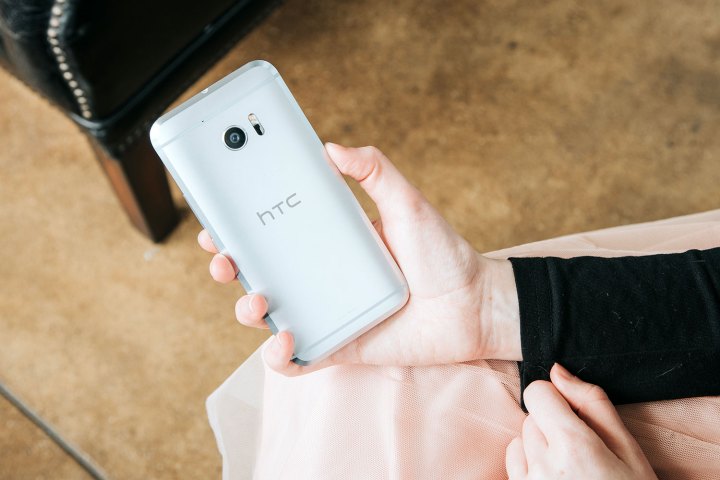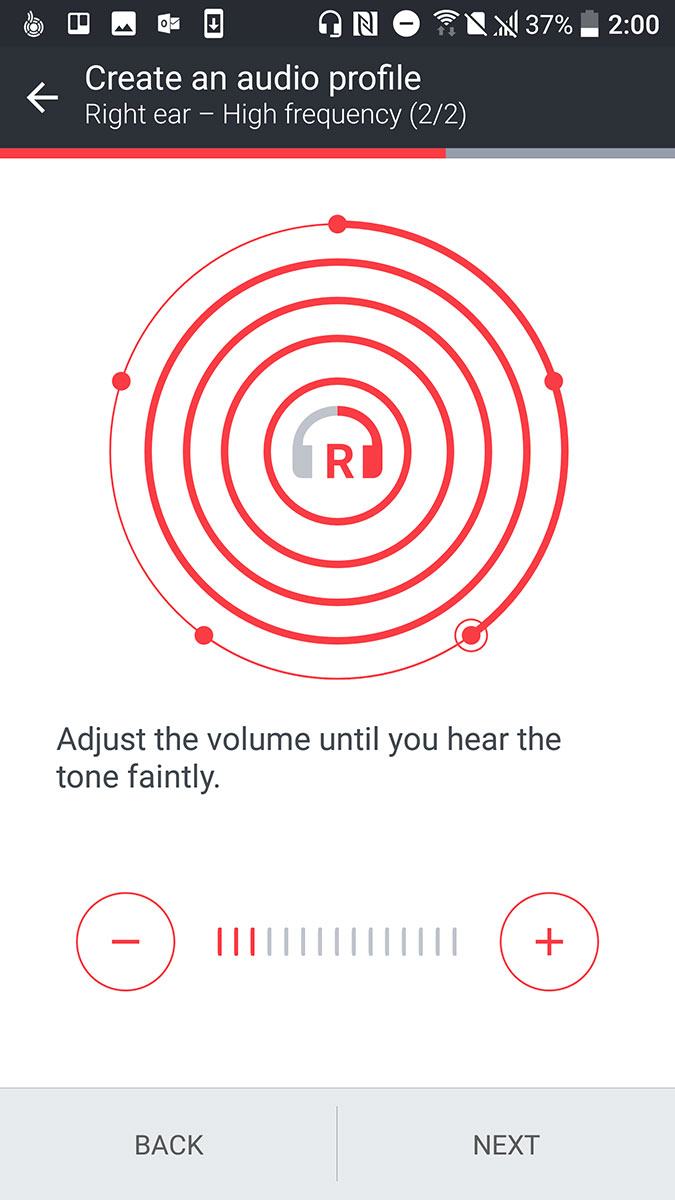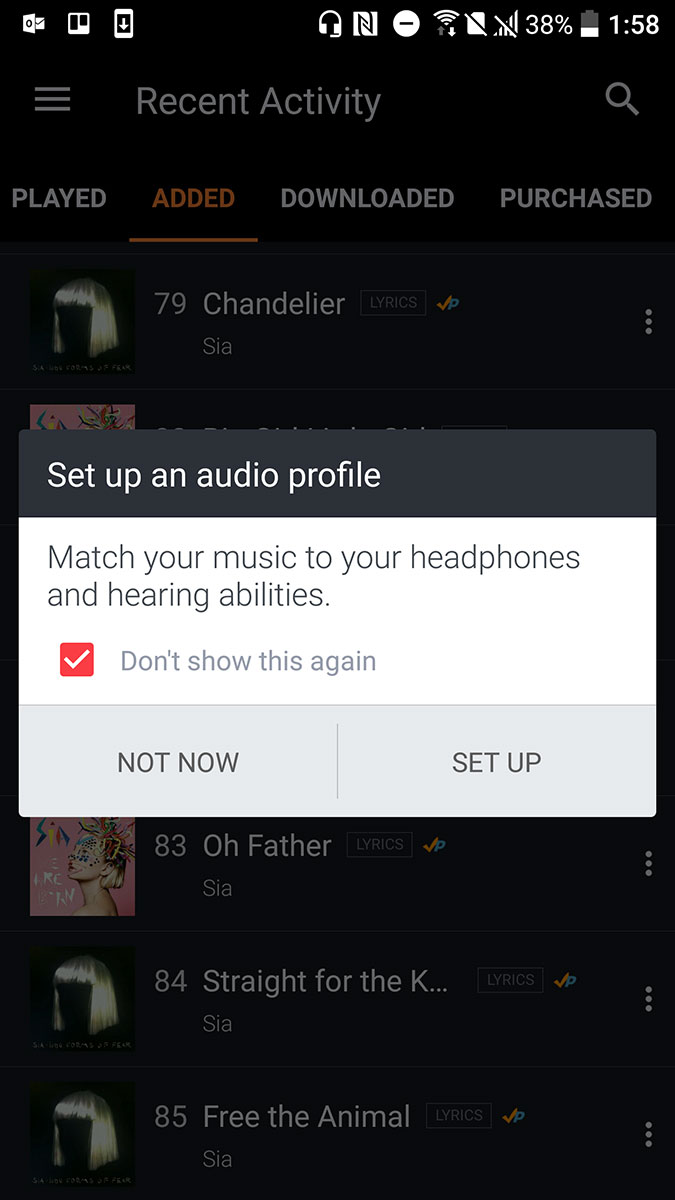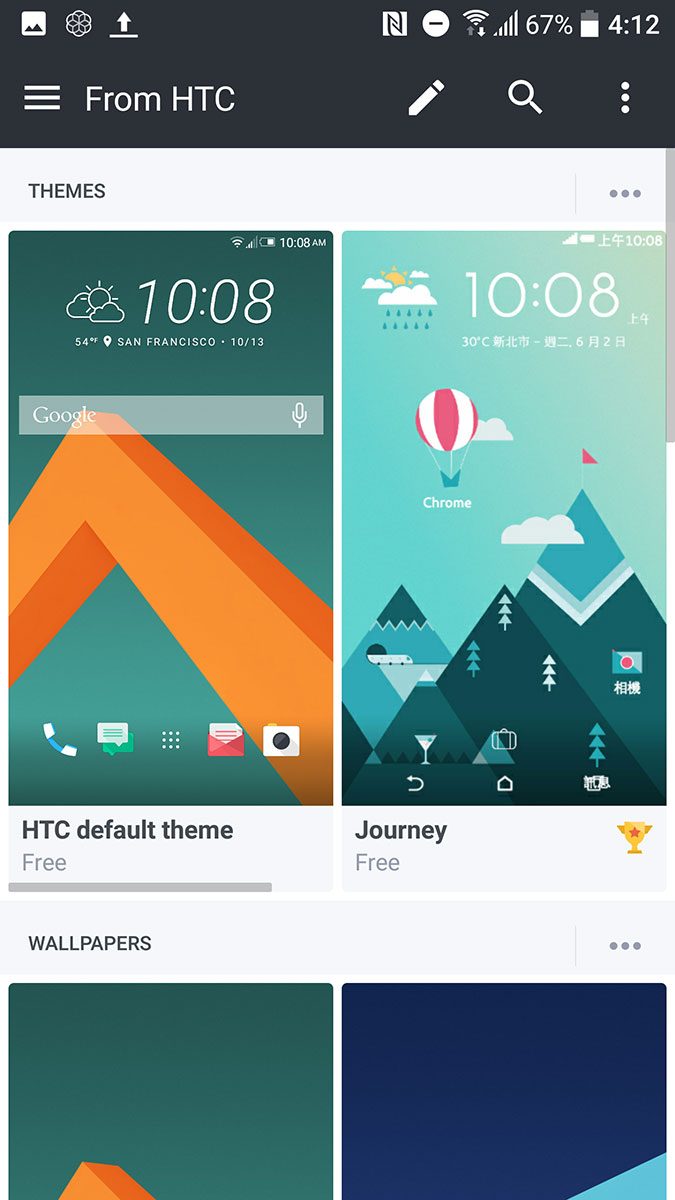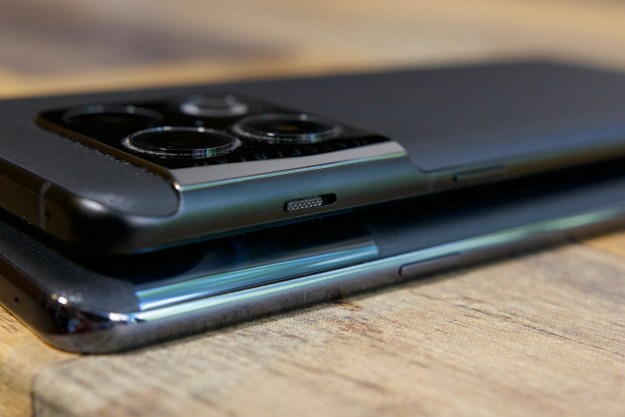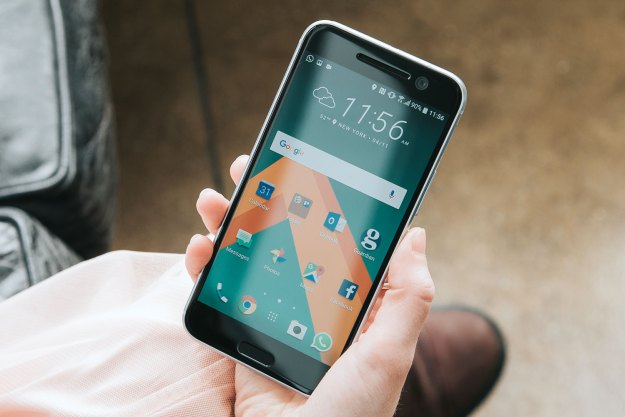
- Gorgeous design
- Clean Android and fun themes
- Hi-Fi audio without the extra cost
- Solid flagship specs
- Fast fingerprint sensor
- Average battery life
- It’s not water resistant
HTC has a lot on the line. Its last two high-end smartphones – the One M9 and the One A9 – failed to excite smartphone buyers, and the once-great company is now suffering from serious quarterly losses. To make matters worse, HTC is trying to claw its way back to the top of the smartphone food chain at a time when competition between flagship smartphones is at an all-time high.
With Samsung’s Galaxy S7 Edge, LG’s G5, and Apple’s iPhone 6S leading the pack, the HTC 10 faces a very tough crowd — but HTC is not afraid. It’s gone as far as to call the device a “Perfect 10.”
We’ve been using the HTC 10 as our daily driver for the past week to see if it can take on the competition and regain its position as one of the best flagship smartphones.
Classic HTC design with a twist
If the
The 10 looks beautiful when the light strikes the edges at just the right angle, and it’s one of the nicest looking Android phones from 2016 so far. It’s more stylish than LG’s bland G5, and it doesn’t attract fingerprints like Samsung’s otherwise gorgeous Galaxy S7 Edge. The silver version is flashier for those who want to stand out, and the matte black model looks subtler.
- 4. HTC 10
Meanwhile, the smooth glass front flows without interruption from top to bottom – just like it does on the One A9, which is best known for looking exactly like an iPhone. We love the way it looks. It’s much more attractive looking than the One M9 with its metal speaker inserts on the front. Of course, that monolithic glass front eliminates the possibility of placing BoomSound speakers on the front of the 10, which will surely anger HTC fans who loved those front-facing speakers. Have no fear, BoomSound fans. HTC popped the speaker on the bottom edge of the device. It’s supposed to be just as good as previous BoomSound speakers, too (more on that later).
Right next to it is the USB Type C port for juicing up your HTC 10. The volume rocker sits above the textured power button on the right side of the device, along with the SIM card slot. The power button is easy to find and the texture helps differentiate it from the volume key.
The 10 recalls the glory days of HTC design.
On the left side, you’ve got a MicroSD card slot for expanded storage. HTC chose to place the headphone jack up on the top of the device, which feels very outdated. It’s an odd choice, especially for a modern phone with a 5.2-inch screen. The headphone jack may be centered on the top of the phone, but it cuts through the sleek edge, leaving a strange little nick in an otherwise sleek design.
There’s also an oval-shaped fingerprint sensor on the front that’s slightly recessed. It’s not a button, so you don’t have to press it to unlock your phone like you do on the Galaxy S7. The fingerprint sensor is wickedly fast and accurate, though we did run into trouble when our fingers were a bit wet after washing the dishes. However, most fingerprint sensors have trouble with moisture, so that’s no surprise. Overall, it’s one of the best fingerprint sensors around, and we love that you don’t have to press a button to unlock the phone.
The screen itself is bright and rich. The 5.2-inch Quad HD screen sports a 2,560 x 1,440 pixel resolution and density of 564ppi (pixels per inch), which is the standard for an
After living with the Galaxy S7 Edge’s always-on display for a time, we missed having that feature on the HTC 10. However, the fingerprint sensor on the HTC 10 makes unlocking the phone to check the time and notifications a breeze, so it’s not too much of a problem. Also, if you’ve never had an always-on screen, you won’t miss it.
Spectacular specs
In benchmarks, the 10 performed very well, and went toe-to-toe with the Galaxy S7 Edge in every test. Here are the numbers for comparison:
Geekbench 3:
- HTC 10: 2,123 single core and 4,761 multi core
- Galaxy S7 Edge: 1,610 single core and 4,269 multi core
3D Mark Sling Shot:
- HTC 10: 2,405
- Galaxy S7 Edge: 2,577
AnTuTu:
- HTC 10: 44,411
- Galaxy S7 Edge: 38,730
HTC went with high-end specs on the 10. Every aspect of this device is top notch, from the gorgeous 5.2-inch Quad HD screen, to the Qualcomm Snapdragon 820 processor and 4GB of RAM. The processor is the exact same chip you’ll find in the Galaxy S7, S7 Edge, and the LG G5. During our testing, the HTC 10 was lightning fast and we never experienced lag on the device.
Just like most
We’re glad HTC accepted Flex storage, because now you won’t get those annoying prompts asking if you want to store that app or photo on your MicroSD card every time you save something. It makes having expandable storage less of a hassle.
The HTC 10 has just about everything you could possibly want on a high-end
Sound that’ll please audiophiles
Just because you don’t see two front-facing speakers on the HTC 10 doesn’t mean the company has forgotten about audio. HTC says its “re-engineered” BoomSound Hi-Fi edition speakers separate the woofer and the tweeter, so that the sound output of the woofer comes from the bottom speakers, and the tweeter through the top speakers. That means you’ll be hearing higher notes coming out of the top, and the mid-to-lower notes coming out of the bottom speaker.
The HTC 10 has just about everything you could possibly want on a high-end
HTC says that the 10 sounds just as good as the One M9, even though the sound is coming out of the bottom – not the front of the device. However, the new speaker position does mean that you have to be careful how you hold the 10 when you listen to music. If you cover that speaker up, the sound gets muffled. In our tests, the HTC 10’s speakers sounded better than most smartphones, but not as strong as previous devices with BoomSound.
We compared the 10 to the
Additionally, the headphone amp offers the ability to upscale 16-bit to 24-bit audio, and each speaker has its own dedicated amp as well. HTC’s offering a Personal Audio Profile that essentially lets you personalize the sound you hear from the 10 to your own tastes. You can choose between five different frequencies, sort of like a hearing test, to best optimize the sound output.
It was a fun experience, setting up my own audio profile, and I’m sure audiophiles will love it. The test was easy to do, but you should really do it in a silent place – not a busy office. Once you’re done, you can toggle it on and off to hear the difference. Although I’m definitely not an audio expert by any means, the sound profile did sound better than the canned track.
The HTC 10’s ability to upscale tracks and cater to audiophiles’ desire for personalized high-res audio is unique. LG’s G5 makes you buy a special module for nearly $100 to get the same experience, and it looks like you can’t even buy that module in the United States. This makes HTC the clear winner on the audio front. If high-res audio matters to you, the HTC 10 is the phone you’re looking for. It’s the only device on the market that prioritizes audio above all else.
A solid camera
Previously, HTC’s UltraPixel camera tech has fallen flat. Although you could produce cool focusing effects, it didn’t have the resolution to make it worth it. With the 10, HTC upgraded the UltraPixel rear camera to a 12-megapixel sensor with Optical Image Stabilization (OIS), and laser autofocus. The device also boasts an f/1.8 aperture,1.55μm pixel size, and 26mm focal length to let more light into the sensor and produce better low-light pictures. There’s also a dual-tone LED flash, and the camera can shoot 4K video with
On the software side, you can choose between Auto, HDR, Panorama, and Pro modes. The pro mode lets you tweak everything from ISO to white balance, just like you would with a DSLR in manual mode. We prefer the simplicity of HTC’s manual mode to the manual mode on the LG G5, and you can take some great photos with the 10’s camera.
We were especially impressed with the level of detail in a macro shot of broccoli. As you zoom all the way in on the photo, you’ll keep finding more detail. The HTC 10 also produces photos with realistic colors that aren’t oversaturated. A common criticism that’s leveled at Samsung phones is that the colors are exaggerated. The 10 takes realistic photos, though the colors can appear too “cool” in some shots. In ideal lighting, the HTC 10’s camera excels, taking gorgeous shots. Photos of city scenery turned out fantastic, as did the handful of close ups we shot.
The camera wasn’t without fault, however. Occasionally, the laser autofocus misses or takes too long to home in on the subject. The reason why people love the iPhone’s camera so much is because you literally just point and shoot. You rarely have to select a subject to focus on in the frame. It just takes the picture. Samsung’s Galaxy S7 Edge and LG’s G5 offer the same experience as the iPhone, and occasionally best the iPhone. HTC’s 10 sometimes struggled to focus on the correct subject.
In low light, the HTC 10 had a hard time focusing and snapping a picture quickly. At night, the shutter took so long to snap a picture that I would’ve needed a tripod to prevent any blur. The resulting picture was decent, but not the best we’ve seen. The Galaxy S7 Edge seems to do better in low light, but only slightly.
If high-res audio matters to you, the HTC 10 is the phone you’re looking for.
We took a shot of a rubber duck in a dark studio with no light to see which phone took the best shot. The Galaxy S7 Edge defeated the HTC 10 with a shot that was in focus, albeit grainy. The 10’s shot was out of focus and grainy to boot. To be fair, that was a particularly tough test to put a smartphone camera through, and other nighttime shots of the city turned out just fine. HTC says a software update is coming soon with some tweaks to the camera software, so that may fix some of our quibbles.
As for the 5-megapixel front camera, it boats OIS, a f/1.8 aperture, and a 23mm focal length. The camera records in Full HD, and the resulting video was rock steady, which isn’t something you can say about most selfie cameras. HTC’s addition of OIS to its selfie camera proves that it’s ready for the self-obsessed generation of Periscopers, Facebook Live Video users, and Snapchaters who love taking videos of themselves. If you’re into that kind of thing, the HTC 10’s selfie camera is the best you can get.
The selfie camera also has several modes, including auto selfie, Auto
Battery life is average
HTC really talked up the 10’s battery, and the 3,000mAh pack is certainly large enough to keep the device running after a busy day at work. HTC says that people who aren’t power users may get up to 48 hours of battery life. As a power user, I typically had about 40 percent battery left around 9 p.m. after a busy workday, which isn’t too shabby, but it’s not great, either. You won’t be getting a day and a half out of the 10 if you use your phone a lot. I was hoping for more, but the HTC 10’s battery life is just average. It’s about the same as the Galaxy S7,
If you’re like me, you get uncomfortable when your phone goes below 40 percent, and you’d never leave the house with that little battery left. Luckily, the HTC 10 charges up rapidly with Quick Charge 3.0 via its USB Type C port. Specs say Quick Charge 3.0 juices your phone up to a 50 percent charge in 30 minutes, and based on our experience, that number is accurate.
The phone was down to 15 percent in the morning, so I plugged it in while I got ready for work. By the time I sat down to breakfast, it was already around 80 percent. Quick Charge is great, and it’s a feature that every single phone should have.
Fresh Android that might get updates
HTC used to modify
However, if you want to customize your
- 5. HTC 10
HTC introduced a new set of themes that let you use stickers instead of app icons. You simply pop a sticker on your homescreen, drag it up to the corner until you see the option to link an app to it. Then, you can choose to make that cool hot air balloon sticker into a shortcut to Slack, WhatsApp, or any other app on your phone.
It’s a lot of fun to customize your phone, and I’ve personally been a fan of the theme store since it appeared on HTC phones last year. Your phone is just about the most personal thing you own, so why shouldn’t you be able to alter its appearance every now and then? The best thing about HTC’s themes (besides the near endless variety) is that the choice is yours. Like pure
Since it’s your choice and HTC’s Sense is toned down so much, updates to the latest version of
Serious hacks and malware pose real and imminent danger to
Warranty information
HTC offers one of the best warranties in town. When you buy an HTC 10, you get 12 months of Uh-Oh protection for free. The service includes a screen replacement, if you break your screen, and it even protects against water damage.
It’s really easy to get repairs or replacements, too. With Uh-Oh protection, you simply call customer support or chat with a representative online, and once you’ve discussed your problem, you can get a replacement in 1 business day before you even send back your damaged phone. HTC will put a $600 hold in your credit card until it gets the damaged phone, though, so don’t get any ideas. Alternatively, you can send in your damaged phone with a pre-paid label and get a replacement device 2 days after HTC gets your broken one.
Conclusion
The HTC 10 is an excellent phone, and it ticks off all the boxes for features you’d want on a flagship
For HTC, the challenge was even tougher. It’s fallen from grace in recent years, and the HTC 10 has to be a perfect 10. When you’re going up against the Samsung Galaxy S7 Edge, the LG G5, or the
HTC offers a handful of reasons, which will be more convincing to some than others. Its commitment to high-res audio shows on the 10, and audiophiles will be able to appreciate the difference in audio quality. For them, the 10 is a great buy.
The design is another element that will motivate some buyers to spring for the 10. After all, it’s the perfect mix of elements from HTC’s two best-looking phones: the One M8 and the One A9. If you find the LG G5 bland and the Galaxy S7 Edge too flashy, you’ll probably love the 10’s looks as much as we do.
The clean software, which looks close to Stock
If any of these three features pique your interest, take a look at the HTC 10. Overall, the Galaxy S7 Edge is still our top high-end phone and Nexus 6P is our top overall Android phone, but no one will walk away disappointed they purchased an HTC 10.
Editors' Recommendations
- The best OnePlus 10 Pro cases and covers for 2022
- How to pre-order the OnePlus 10T
- Does the OnePlus 10T have wireless charging? What you need to know
- Does the OnePlus 10T come with a case or screen protector?
- OnePlus 10T colors: Should you get the phone in black or green?




